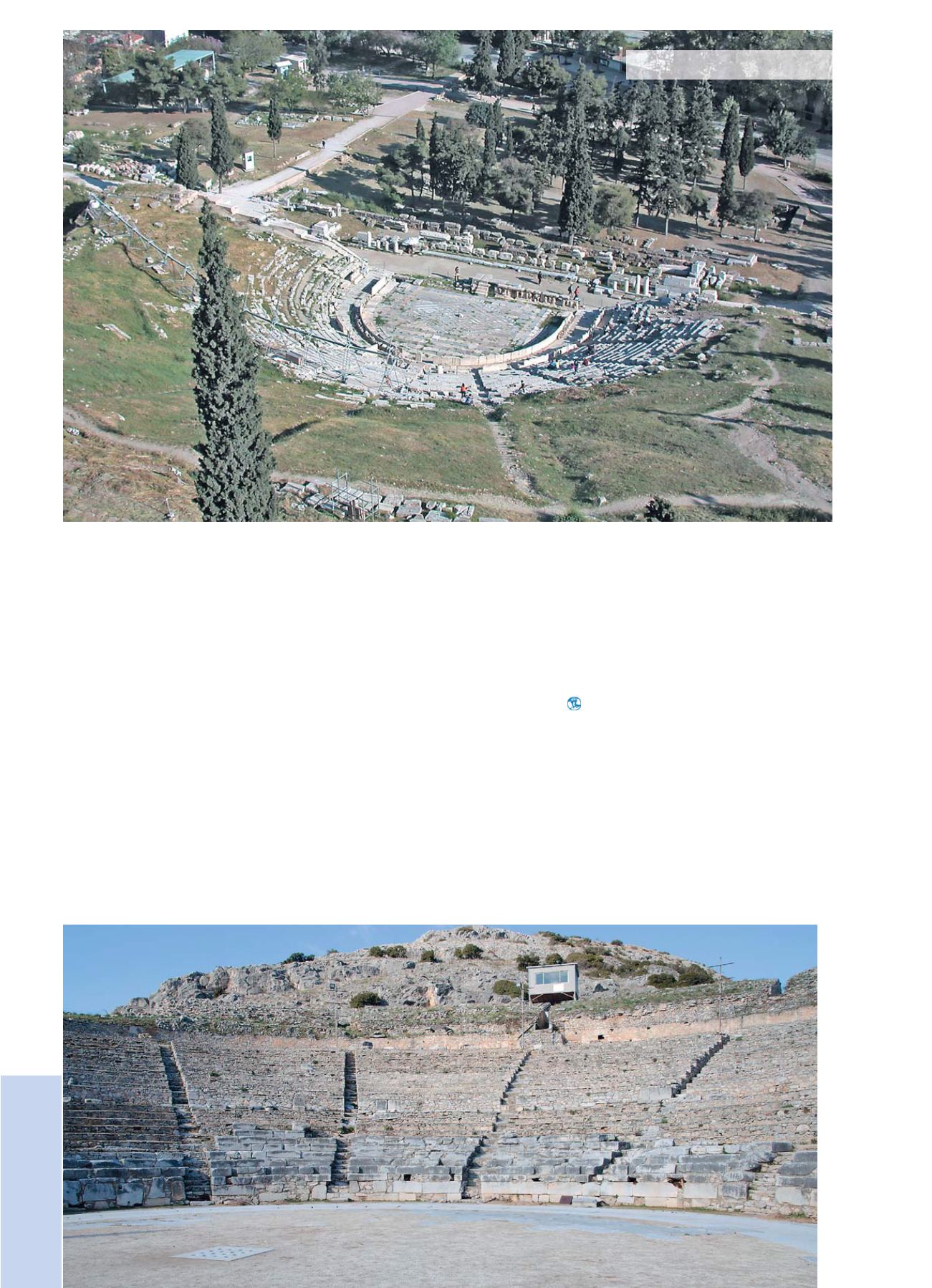
The theatre of Eretria had another peculiarity: it was
the only one to have a vaulted underground gallery,
which connected the
skene
with the centre of the
orchestra
and allowed the emergence, during the
performances, of the actors impersonating nether-
world deities or the dead.
The theatre was mostly built with local poros stone,
and its capacity is estimated at 6,300 spectators,
while its form is very similar to the form given to the
theatre of Dionysus in Athens, after its transforma-
tion in 330 BC.
Today, systematic efforts are made for the Eretria
theatre’s full restoration, while its site provides the
venue for various cultural events during the summer.
The preservation (discovery, restoration, mainte-
nance, protection, and promotion) of the ancient
theatres that are scattered throughout Greece is, of
course, the responsibility of the competent govern-
ment authorities; however, it is also the moral duty
of every Greek, since these monuments represent
the key elements of a civilization that was born in
this land.
This is why special mention should be made to a
citizen movement that, as part of the “Diazoma”
society, is systematically working for the restoration
of ancient theatres, with the aim of bringing them
back to life, as theatrical venues and modern cul-
tural and spiritual hubs.
References
1. Phyllis Hartnoll,
A Concise History of the Theatre
(Greek
edition -translation by Roula Pateraki), Ypodomi
Publications, 1980
2. Leonidas B. Lellos,
GREECE - History, Museums,
Monuments
(in Greek), Athens 1973
3. Anastasios Stephos, Emmanuel Stergioulis, Georgia
Charitidou,
History of Ancient Greek Literature
(in Greek),
Ministry of Education, 2004.
4
. Brief Tourist Guides
(Greek National Tourism
Organisation publications) and websites of the Ministry of
Culture and the Athens and Epidaurus Festival
.
Trade with Greece
120
Ancient theatre of Eretria
Theatre of Philippi


